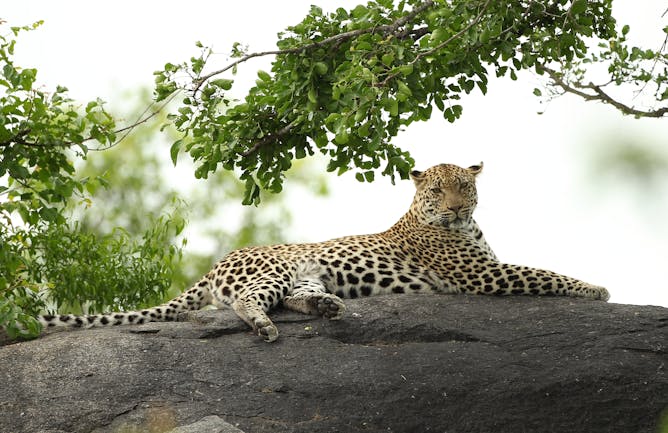|
DNA is the key to understanding life. In many cases, genes – specific sequences of DNA – are the starting point to develop better medicines, solve crimes, improve crops, manage conservation, and much more. Take giraffes, the tallest animals on Earth. They have a complicated evolutionary history. Scientists are still figuring out how different giraffe populations are related and how many species there are – which will guide efforts to protect them. Biologist Laura Bertola shares what she learned from giraffe DNA.
In this newsletter, we share a selection of articles about how researchers in different fields are using DNA studies. These include: a study that changes everything we knew about the evolutionary history of modern elephants, a DNA recovery technique which could help women bring rapists to justice and a look at how genetically modified mosquitoes could help in the fight against malaria.
Our annual donations campaign is still running this week. Please consider supporting the important work we do.
Donate now
|

|
Wale Fatade
Commissioning Editor: Nigeria
|
|

Laura Bertola, Leiden University
Giraffes show remarkable genetic differences between populations.
|

Julien Benoit, University of the Witwatersrand
DNA studies reveal that African elephants belong to a very successful and widespread family.
|

Shüné Oliver, National Institute for Communicable Diseases; Jaishree Raman, National Institute for Communicable Diseases
Methods that don’t rely on insecticides are needed to bolster the fight against mosquito-borne diseases.
|
|
|
-
April J Burt, University of Oxford; Noam Vogt-Vincent, University of Hawaii
Baby corals may hold promise for building coral reef resilience in Seychelles and beyond.
-
Patrick Omeja, Makerere University
Many animal species can be detected using a simple, low tech method of collecting DNA from the environment.
|
|
|
|

Ademola Adenle, Technical University of Denmark
Genetically modified crops are increasing yield and food security in developed countries, but in Africa, a lack of adoption is limiting success.
|

Alan G Morris, University of Cape Town
A rush of ancient DNA projects in Africa has presented the curators of archaeological skeletons with ethical issues because research requires the destruction of human bone.
|
|
|
-
Lisa Smith, University of Leicester; Heather D. Flowe, University of Birmingham; Jon Wetton, University of Leicester; Mark Jobling, University of Leicester
Self-examination DNA collection techniques can help women bring the perpetrators of sexual violence to justice.
-
Andi Wilson, University of Pretoria; Brenda Wingfield, University of Pretoria; Michael John Wingfield, University of Pretoria
Through a blend of perseverance, technology, and a touch of serendipity, it was possible to solve a decades-old mystery.
|
|
|
|

Laura Tensen, University of Copenhagen
Research exploring how leopards evolved has found that South African leopards are descended from an ice age a million years ago.
|

Lukoye Atwoli, Aga Khan University Graduate School of Media and Communications (GSMC); Anne Stevenson, Harvard University
Research on the genetic basis of mental illness has so far largely excluded anyone who is not of European heritage.
|
| |
|
|
|
|
| |
| |
| |
Would you like to republish any of these articles?
|
|
It’s free to republish, here are the guidelines.
Contact us on africa-republish@theconversation.com in case you need assistance.
|
| |
| |
| |
| |
|
|